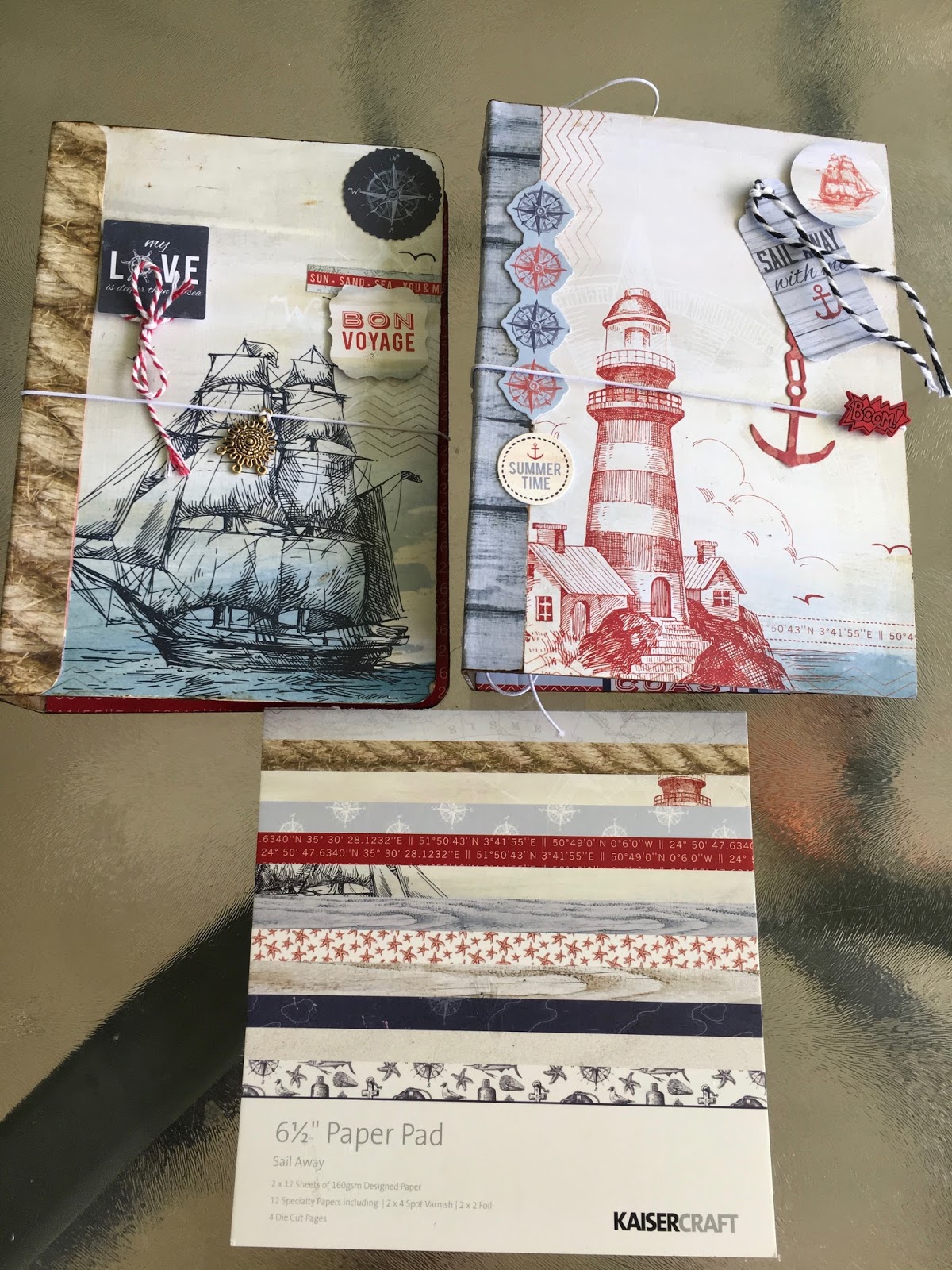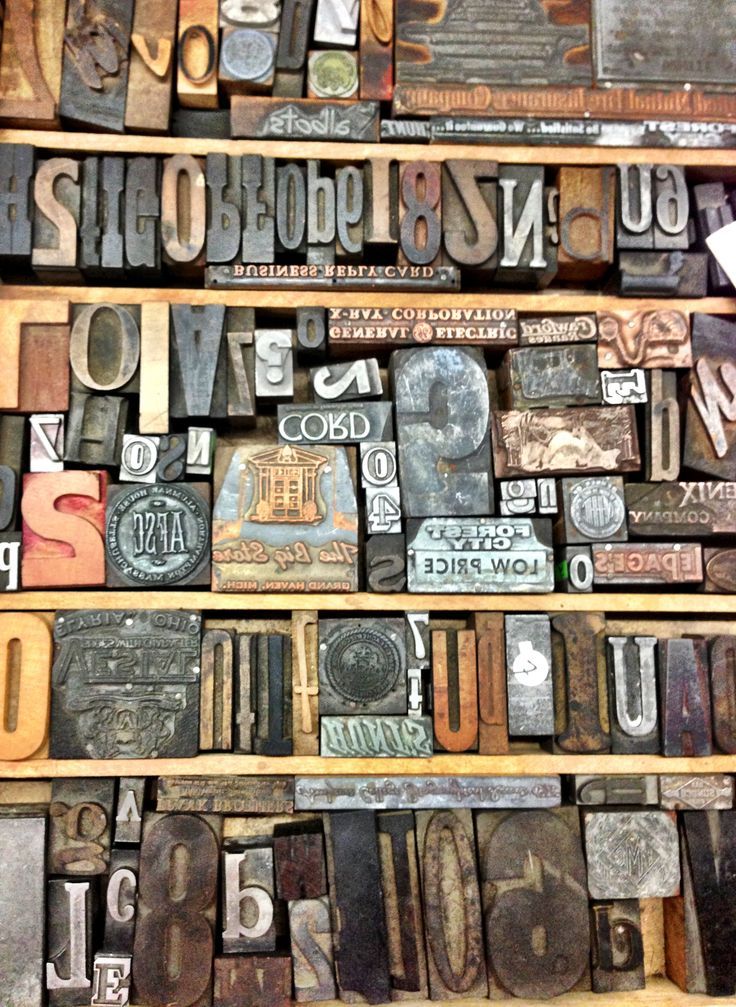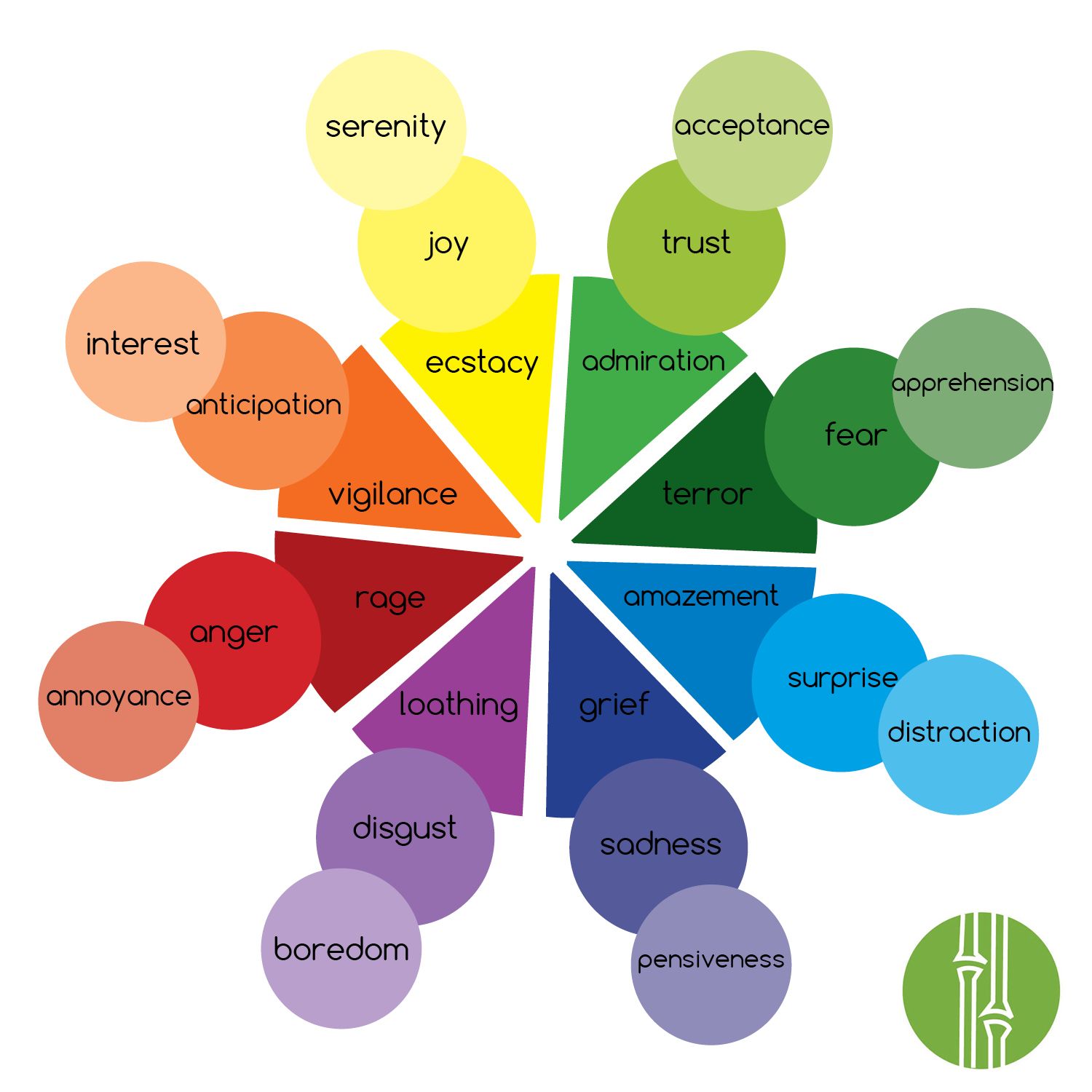Prepress services are the processes used to prepare a project for outputting on physical media such as film positives or plates. This requires leveraging design software that is capable of creating the necessary files and formats needed by print shops in order to properly set-up a project. In this blog, we’ll explain what pre-press services are offered by print shops, which types of software they require, and how best to use them. Prepress services are an essential part of any printing job; without them it would be impossible to properly prepare projects for outputting on physical media such as film positives or plates ready for press runs. Understanding which types of pre-press services can best meet your needs—as well as which types of design software are most suitable—will help ensure that your printing jobs turn out perfect every time! With this information handy now all website owners and SEO newbies have the starting knowledge they need to work with graphic designers and printers when preparing a project for outputting on physical media such as film positives or plates ready for press runs. Good luck! Traveling is not just about traversing distances; it’s a profound odyssey that immerses us in diverse cultures, landscapes, and experiences. In today’s digital age, where screens dominate our interactions, there’s a certain allure in embracing the tactile world. Customized maps and travel journals, meticulously crafted and thoughtfully personalized, have emerged as indispensable tools for the discerning traveler. They have the power to transform ordinary journeys into extraordinary adventures, weaving the stories of our explorations into the very fabric of their pages. In this extensive exploration, we delve deep into the world of printing for travel, unraveling the multifaceted ways in which personalized maps and journals not only guide us but also elevate our travels, turning them into immersive, meaningful, and unforgettable experiences. While digital maps offer convenience, customized printed maps offer something far more profound: a personalized journey through artistry and curation. These bespoke maps are not mere navigational aids; they are intricate visual narratives, encapsulating the soul of a destination. With meticulously designed layouts, personalized markers, and cultural motifs, these maps become more than tools—they are artifacts of our adventures. Imagine embarking on a backpacking odyssey through the heart of Europe. Armed with a customized map highlighting not only the iconic landmarks but also the hidden gems known only to locals, your journey transcends the ordinary. The map, embellished with your favorite art galleries, charming cafes, and offbeat attractions, transforms navigation into a personalized adventure. Each cobblestone street and each quaint bookstore marked on the map becomes a chapter in your travel story. The customized map becomes a cherished travel artifact, encapsulating the essence of your wanderlust and the spirit of your expedition. In a world flooded with digital images, the tactile experience of a travel journal is unparalleled. These personalized notebooks, often featuring custom covers and high-quality paper, become sanctuaries for our thoughts, sketches, and mementos. Travel journals capture not just the sights but also the essence of our journeys, allowing us to relive the moments, sounds, and emotions long after the trip has ended. Envision yourself sitting on a quiet beach in Bali, watching the sun set over the tranquil waters. With a customized travel journal in hand, you sketch the breathtaking scene before you, capturing the fleeting moment on paper. As you write about the gentle lapping of the waves and the golden hues painting the sky, the sensory details come alive. Pressed flowers from local markets find their place within the journal’s pages, intertwined with handwritten notes from encounters with Balinese artisans. These tactile experiences become a multisensory tapestry of memories, transporting you back to that serene beach whenever you open the journal. The act of writing, drawing, and preserving mementos in a physical journal adds depth to your travel experience, allowing you to savor the nuances of your journey long after you’ve returned home. One of the joys of customized travel materials lies in the inclusion of tailored recommendations. These personalized guides, infused with local insights and traveler anecdotes, transform our journeys into immersive cultural experiences. From hidden eateries to secluded viewpoints, these recommendations offer a glimpse into the soul of a destination, connecting us with its authenticity. Consider embarking on a culinary expedition through the bustling streets of Bangkok. Armed with a customized guide, you venture beyond the popular tourist spots, discovering intimate family-run eateries serving authentic Thai cuisine. The guide, enriched with personal recommendations, not only introduces you to the diverse flavors of Thailand but also connects you with local chefs and passionate food artisans. Your culinary adventure becomes a cultural odyssey, where each meal becomes a storytelling experience, and every dish tells the tale of Thai gastronomy. These personalized insights elevate your culinary adventures, allowing you to savor not just the food but the stories behind the flavors, making your gastronomic journey an unforgettable exploration of culture and cuisine. In an era where environmental consciousness is paramount, sustainable printing practices have become a crucial consideration for travelers. Customized maps and journals can be printed on eco-friendly materials, such as recycled paper and soy-based inks, minimizing their environmental impact. By embracing these sustainable options, travelers can embark on their adventures with a profound sense of environmental responsibility, ensuring that their explorations do not harm the very environments they admire. Imagine hiking through the ancient redwood forests of California, armed with a map printed on recycled paper. The trail markers blend seamlessly with the natural surroundings, emphasizing the harmony between exploration and conservation. As you jot down your observations in a travel journal crafted from sustainable materials, you contribute to the preservation of these pristine ecosystems. These eco-conscious choices not only enrich your travel experience but also ensure that your footprint on the planet is as light as the rustle of leaves in the wind. Traveling responsibly, both culturally and environmentally, becomes a holistic experience, where every step taken is in harmony with the natural world. Customized maps and journals transcend their functional roles; they become personalized souvenirs, encapsulating the very essence of our travels. These meticulously crafted items, adorned with our memories and reflections, transform into cherished keepsakes. In a world where material possessions often fade in significance, these personalized mementos become tangible reminders of our adventures, invoking nostalgia and gratitude long after we’ve returned home. Imagine exploring the ancient ruins of Machu Picchu. With a customized journal in hand, you document your awe as you trace the intricate carvings on the stone walls. You press a vibrant orchid between the journal’s pages, preserving a piece of the Andean beauty. Later, as you peruse your journal, the delicate flower transports you back to the misty mornings of the Peruvian highlands. Your customized journal becomes a portal through which you can relive the magic of Machu Picchu, one page at a time. The pressed orchid, carefully placed between the pages, becomes more than a souvenir; it becomes a tangible memory, evoking the sensory experiences of the moment. These personalized keepsakes turn the ephemeral nature of travel into enduring memories, allowing you to revisit your adventures whenever you open the pages of your journal or glance at your customized map hanging on your wall. In the tapestry of travel experiences, customized maps and journals emerge as vibrant threads, weaving together the very essence of our explorations. They transcend their physical forms, becoming portals to distant lands, repositories of cultural encounters, and witnesses to our transformative journeys. As travelers, we are no longer bound by generic guides and mass-produced maps. With the allure of customization, our travel experiences become as unique and diverse as the destinations we visit. Customized maps become treasure maps leading us to hidden gems, while travel journals become time capsules preserving our thoughts and emotions. The next time you embark on a journey, consider the allure of personalized maps guiding you through uncharted territories and journals waiting to capture the nuances of your adventures. In the world of travel, where every sunrise brings new possibilities and every sunset whispers ancient tales, customized prints become the canvas on which we paint our unforgettable memories. So, whether you’re wandering through bustling bazaars or hiking along mountain trails, let your personalized maps and journals be your faithful companions, enriching your travels with the magic of customization and the artistry of exploration. Embrace the world with open arms and a customized map in hand, and let your travel journal be the keeper of your most cherished travel stories. After all, in the realm of personalized prints, every journey becomes a masterpiece waiting to be written, and every adventure becomes a work of art waiting to be explored. Let your travels be not just a movement from one place to another, but a masterpiece waiting to be crafted, one customized map and journal at a time. Through the lens of customization, the world becomes not just a destination, but a canvas of endless possibilities, waiting for your unique and personalized story to unfold. In the fast-paced, digital world of the 21st century, the art of letterpress printing stands as a testament to a time when craftsmanship, patience, and artistry were the cornerstones of printing. Rooted in the historical annals of ancient China and catapulted into prominence by Johannes Gutenberg’s ingenious invention, letterpress printing has not merely survived the test of time; it has evolved, adapted, and experienced a renaissance, captivating the hearts of artisans, collectors, and enthusiasts worldwide. In this extensive exploration, we will embark on a journey through the intricate origins, delve deep into the nuanced letterpress process, explore its impact on various industries, discuss its contemporary revival, and ponder its future in the ever-changing landscape of technology and art. The story of letterpress printing begins in ancient China, where woodblock printing was the norm. However, it was Gutenberg’s groundbreaking invention in the 15th century that transformed the world of printing. Movable metal type, a revolutionary concept, allowed for the mass production of books, fundamentally altering the dissemination of knowledge and culture. This evolution paved the way for a vibrant printing industry, giving rise to master craftsmen, skilled compositors, and visionary printers who honed the art of letterpress over centuries. Typesetting, the heart of letterpress printing, is a meticulous art that demands patience, precision, and a keen eye for detail. Skilled artisans carefully arrange individual metal or wooden letters and characters in a composing stick, ensuring the accurate formation of words and sentences. The arrangement is not just a mechanical process; it is an artistic endeavor where the compositor plays the role of a sculptor, shaping language and meaning letter by letter. Once the type is painstakingly set, the printer meticulously applies ink to the typeform. The inked type is then pressed onto paper, creating a tactile impression that is the hallmark of letterpress. The choice of paper, ink viscosity, and printing pressure are not arbitrary; they are deliberate choices made by the printer, each decision contributing to the final aesthetic of the printed piece. Unlike modern digital printing, letterpress involves a deeply personal touch. Printers must constantly monitor the ink consistency, adjust the pressure, and maintain the integrity of the type. This intimate involvement of the human hand imparts a soul to each print, making it a testament to the printer’s skill and dedication. Every print becomes a unique creation, bearing the subtle imperfections that reveal its handmade nature. In its heyday, letterpress printing played a pivotal role in shaping cultures and societies. It brought literature, philosophy, and art to the masses, enabling the rapid dissemination of ideas. Beyond books, letterpress was instrumental in creating visually captivating broadsides, posters, and newspapers, becoming an essential tool for political movements, advertisements, and public announcements. The tangible quality of letterpress made these printed materials not just informative but also artifacts of historical significance. In the realm of commerce, letterpress printing found a niche in crafting elegant invitations, business cards, and packaging materials. Its ability to create a lasting impression, both visually and tactilely, made it the preferred choice for high-end branding and exclusive events. Even in the digital age, where virtual invitations dominate, the allure of a letterpress invitation remains unparalleled, signifying sophistication and class. After facing a decline with the advent of offset printing and digital technologies, letterpress printing has experienced a remarkable resurgence in recent decades. Artists, designers, and artisans have rekindled their love affair with this vintage craft, recognizing its unique ability to convey a sense of heritage and authenticity. This revival is not merely a return to tradition; it is a celebration of the tangible, the tactile, and the timeless. Contemporary artists have embraced letterpress as a medium for artistic expression, pushing the boundaries of traditional techniques. Experimental letterpress art incorporates elements of collage, mixed media, and even digital technology, resulting in visually stunning and conceptually rich pieces. Letterpress workshops and art studios have become hubs of creativity, where artists explore the synergy between age-old craftsmanship and modern artistic sensibilities. Ironically, the digital age has become an ally in the resurgence of letterpress printing. Computer-aided design and photopolymer plates have streamlined the pre-press process, making it easier for designers to translate their digital creations into letterpress prints. Online platforms have facilitated global collaborations, enabling artists and printers from different corners of the world to exchange ideas, techniques, and inspiration. Social media has provided a stage for showcasing letterpress creations, fostering a vibrant online community passionate about this craft. As the custodians of this ancient art form grow older, there is a pressing need to pass on their knowledge to the next generation. Workshops, apprenticeships, and educational programs have emerged as vital initiatives to preserve the craft of letterpress printing. Universities and institutions with printing programs are ensuring that letterpress remains an integral part of the curriculum, allowing young printers to learn the techniques from seasoned experts. The importance of preserving vintage letterpress equipment cannot be overstated. Museums dedicated to printing history and letterpress equipment have become invaluable repositories of knowledge. Preservationists and restoration experts work tirelessly to salvage antique presses and type, ensuring that these relics of the past continue to function. Archival efforts document the evolution of letterpress, preserving not just the physical artifacts but also the stories of the printers who shaped the craft. In the hands of passionate educators and mentors, the legacy of letterpress printing continues to thrive. Through mentorship programs and collaborative initiatives, experienced printers pass on their skills, techniques, and wisdom to the next generation. The continuity of this tradition relies on the willingness of seasoned craftsmen to share their expertise and the enthusiasm of young printers to embrace the challenges and rewards of letterpress. As we gaze into the future, the trajectory of letterpress printing appears to be a harmonious balance between innovation and preservation. While digital technologies continue to influence the craft, there is a resolute commitment to preserving the authenticity and tactile quality that define letterpress. Hybrid techniques, combining letterpress with other forms of printing or artistic expression, are becoming increasingly prevalent, opening new avenues for creative exploration. The marriage of letterpress with digital printing, laser cutting, and other modern technologies has resulted in innovative and visually striking outcomes. Artists and designers are experimenting with hybrid approaches, seamlessly blending the tactile allure of letterpress with the precision of digital techniques. This convergence of old and new not only expands the creative possibilities but also introduces letterpress to audiences unfamiliar with its traditional roots. In an era acutely aware of environmental concerns, the letterpress community has embraced sustainable practices. The use of eco-friendly, soy-based inks and the choice of recycled or tree-free papers reflect a conscientious approach to the craft. Printers are exploring ways to minimize waste, recycle materials, and reduce their ecological footprint, ensuring that letterpress remains an environmentally responsible choice for both artists and clients. In the intricate dance of metal type and ink, in the symphony of impressions on paper, letterpress printing transcends its utilitarian purpose and becomes a celebration of human creativity. It embodies the spirit of innovation that led Gutenberg to revolutionize printing, the artistry of craftsmen who meticulously set each type, and the timeless appeal of tangible, tactile beauty. The resurgence of letterpress in the digital age is not merely a nostalgic embrace of the past; it is a testament to the enduring allure of a craft that bridges generations and technologies. Letterpress printing is not just a technique; it is a philosophy—a philosophy that values the deliberate, the meticulous, and the tangible. In an age inundated with ephemeral digital experiences, letterpress offers something tangible, something real. As we move forward, the craft of letterpress printing stands at the crossroads of tradition and innovation, heritage and experimentation. It reminds us that amid the whirlwind of technological advancements, there is profound value in honoring our past, preserving our cultural heritage, and cherishing the art forms that encapsulate the human spirit. In the hands of passionate artisans and the curious minds of future printers, letterpress printing will continue to evolve, adapt, and captivate. Its legacy will not fade; instead, it will flourish, embracing the future while staying rooted in its rich history. The allure of letterpress printing will endure, inspiring generations to come, reminding them that the magic of ink on paper is not just a product of technology but a manifestation of artistry, dedication, and the enduring craft of letterpress printing. In the ever-evolving landscape of marketing, where every detail can impact consumer decisions, the role of color cannot be overstated. Colors have the extraordinary ability to evoke emotions, shape perceptions, and influence behavior. When it comes to print marketing, choosing the right colors is a strategic decision that can either elevate or undermine a campaign. To craft effective marketing materials, it’s essential to delve into the psychology of color and understand how it impacts your target audience. The Profound Impact of Color on Emotions Colors possess the remarkable capability to elicit specific emotions and moods. Here’s a comprehensive look at some common colors and the emotions they tend to evoke: Cultural and Contextual Considerations It’s crucial to recognize that the psychological impact of colors is not universally consistent and can vary significantly across cultures and contexts. For example, while red symbolizes love and luck in Western cultures, it can signify danger or caution in some Asian cultures. Additionally, personal experiences and individual preferences can also influence how people perceive colors. The context in which colors are used is another essential factor to consider. While a bright and bold color scheme may effectively promote a summer sale, it might not be suitable for a serious medical brochure. Marketers must weigh both cultural nuances and the specific context of their campaigns when selecting colors. The Intricacies of Color Combinations and Consistency In print marketing, the selection of colors isn’t just about individual hues but also about how they interact when combined. Achieving color harmony is essential for creating visually appealing and effective marketing materials. Various color schemes, including complementary colors, analogous colors, and monochromatic schemes, can be strategically employed to create contrast, harmony, or emphasis as needed. Consistency in color usage is another critical aspect of successful branding. Establishing a consistent color palette across all marketing materials, from brochures to business cards to websites, reinforces brand identity and enhances memorability for consumers. Recognizable examples include the golden arches of McDonald’s or the iconic green logo of Starbucks. Testing and Adaptation: The Key to Long-Term Success Understanding the psychology of color in print marketing isn’t a one-size-fits-all concept. What works exceptionally well for one brand or campaign may not yield the same results for another. Consequently, marketers must conduct A/B testing and gather feedback from their target audience to evaluate the effectiveness of color choices. A/B testing involves creating two versions of a marketing material, each with a different color scheme, and then measuring which one performs better in terms of engagement, click-through rates, or conversion rates. This data-driven approach enables marketers to make informed decisions about color selection and continually refine their strategies. In addition to A/B testing, soliciting feedback from focus groups or conducting surveys can provide valuable insights into how consumers perceive and respond to color choices in print marketing. Such feedback helps fine-tune color strategies to align with the preferences and expectations of the target audience. Cross-Cultural Considerations: Navigating Global Marketing Expanding on the topic of cultural considerations, it’s vital to delve deeper into how different cultures perceive and respond to colors in print marketing. Understanding these nuances is the key to success in global marketing campaigns. For example, while red may signify love and passion in many Western cultures, it holds different connotations in various parts of the world. In China, red is associated with good luck and celebration, making it a popular choice for marketing during the Lunar New Year. In contrast, in some Middle Eastern countries, red can symbolize danger or caution. Therefore, a universal approach to color selection may not always yield the desired results in a global context. Color Preferences and Gender: Exploring Variations Studies have revealed that color preferences can also be influenced by gender, although these preferences are not universally consistent and can vary widely among individuals. However, certain trends have emerged. For instance, many women tend to favor softer and more pastel colors, while men may lean toward bolder and more saturated hues. When marketers target specific gender demographics, they should consider these preferences when designing print materials. Nevertheless, it’s crucial to remember that these are general trends and should not be overgeneralized or rigidly applied to all individuals. The Strategic Role of Color in Branding A brand’s color scheme is a fundamental component of its identity. It is often one of the first things consumers associate with a brand. Consider some iconic examples: the vibrant red of Coca-Cola, the soothing blue of Facebook, or the playful multicolor logo of Google. These color choices are not arbitrary; they are carefully selected to convey specific brand attributes and values. During the brand development process, marketers must consider how the chosen colors align with the brand’s personality and messaging. For instance, a health and wellness brand may opt for calming greens and blues to convey a sense of well-being and trust. Conversely, a tech startup aiming to disrupt the industry may choose bold and futuristic colors to symbolize innovation. The Power of Color Consistency in Branding Consistency in color usage is fundamental for building and maintaining brand recognition. When consumers consistently encounter the same colors associated with a brand, it reinforces brand identity and makes it more memorable. Think of McDonald’s golden arches or Starbucks’ iconic green logo; these colors have become synonymous with their respective brands. For print marketing materials, such as brochures, business cards, and product packaging, it’s imperative to adhere to the established color palette. Even subtle variations in color can dilute the brand’s identity and confuse consumers. Maintaining color consistency across all touchpoints reinforces brand recognition and builds trust with consumers. Exploring Color Beyond the Visual: Multisensory Branding While the visual impact of color in print marketing is undeniable, brands are increasingly exploring the multisensory aspects of color. Beyond what meets the eye, color can also influence other senses, such as taste, touch, and smell. For example, a red-colored beverage label may not only visually appeal to consumers but also create expectations of a sweet and fruity taste. In the realm of fragrance marketing, colors are often used to convey specific scent characteristics. Warm and spicy fragrances may be associated with warm colors like red and orange, while fresh and clean scents align with cooler colors like blue and green. Understanding the multisensory aspects of color can provide brands with a unique opportunity to create holistic and memorable experiences for consumers. The Influence of Color on Packaging Product packaging is a critical touchpoint where color plays a pivotal role. The packaging color can significantly impact consumer perceptions and purchase decisions. For example, food products packaged in green containers may be perceived as healthier or more environmentally friendly, while products in red packaging may be associated with indulgence and excitement. Furthermore, packaging color can convey product attributes such as freshness, quality, and premiumness. A well-chosen packaging color can instantly communicate the essence of a product and attract the attention of potential buyers. The Role of Color in Typography In print marketing, color extends beyond the visual elements of images and graphics; it also plays a crucial role in typography. The choice of text color can influence readability, emotional impact, and information hierarchy. For instance, headlines and important information are often presented in bold and contrasting colors to grab the reader’s attention. On the other hand, body text is typically set in a neutral color that enhances readability. Additionally, color can be used to convey emotional nuances in text. A warm and inviting color for call-to-action buttons can encourage interaction, while a subtle color for disclaimers can maintain transparency without distracting from the main message. Color Trends and Contemporary Branding In the fast-paced world of marketing, staying current with color trends is essential for maintaining relevance and appeal to consumers. Color trends evolve over time, reflecting changes in culture, technology, and consumer preferences. Staying attuned to these trends can help brands adapt and connect with their audience effectively. One notable trend in recent years is the shift toward environmentally conscious colors. As sustainability becomes a central concern for consumers, shades of green and earthy tones are gaining prominence in branding. These colors convey a commitment to environmental responsibility and resonate with eco-conscious consumers. Moreover, the use of gradients and color transitions has become a prevalent design trend. Gradients can add depth and dimension to marketing materials, creating a visually engaging experience. They are particularly popular in digital and web design, where they can create dynamic and immersive visuals. The Impact of Color on Print Mediums The choice of colors in print marketing is not limited to digital screens and online platforms; it extends to various print mediums. Each medium offers unique opportunities and challenges for color usage: The Role of Color in Cross-Media Marketing Campaigns In today’s omnichannel marketing landscape, consistency across various media is essential for building a strong brand identity. Brands should carefully consider how color choices translate across print materials, digital platforms, social media, and physical spaces. Consistency in color usage reinforces brand recognition and builds trust with consumers. For example, if a brand’s logo features a specific shade of blue, that same shade should be consistently used across all marketing materials and digital platforms. This uniformity helps consumers instantly identify and connect with the brand, regardless of where they encounter it. The Future of Color in Print Marketing As technology continues to advance, the future of color in print marketing holds exciting possibilities. Emerging technologies like augmented reality (AR) and virtual reality (VR) can enhance the multisensory experience of print materials. Imagine a printed catalog that, when viewed through a mobile app, allows consumers to interact with 3D product models in their chosen colors or explore color variations in real time. Furthermore, advances in color management and printing technologies enable greater color accuracy and consistency, ensuring that brands can maintain their intended color palette across various mediums and devices. Mastering the Art and Science of Color in Print Marketing** The psychology of color in print marketing is a dynamic and multifaceted field that blends artistry with scientific understanding. It’s a realm where the careful selection of colors can trigger emotions, convey messages, and drive consumer behavior. Understanding the psychological impact of colors, considering cultural and contextual factors, and maintaining consistency in color usage are fundamental principles that marketers must embrace. Moreover, staying attuned to color trends and exploring new possibilities offered by technology can set brands apart in an increasingly competitive landscape. The power of color in print marketing extends beyond aesthetics; it’s a strategic tool that can help brands create lasting impressions, connect with their target audience, and ultimately drive success in a dynamic and ever-evolving marketing environment. Whether in brochures, business cards, posters, packaging, or digital media, the art and science of color continue to shape the way consumers perceive and engage with brands. In the contemporary digital landscape of business networking and marketing, one might wonder if the traditional business card still holds any significance. The resounding answer is yes. In fact, the business card remains an invaluable asset, a tangible representation of your professional identity that can leave an indelible mark on potential clients and partners. In this comprehensive guide, we will explore the profound importance of business cards and equip you with an in-depth understanding of how to create business cards that transcend the ordinary and forge lasting connections. In the realm of modern business, where virtual interactions dominate, the business card continues to hold a unique and vital role. Here’s why business cards remain indispensable: In the sea of virtual exchanges and digital profiles, a well-designed business card stands out as a physical representation of your brand. It serves as a powerful and tangible first impression, setting the stage for meaningful and productive professional relationships. Despite the convenience of digital communication, nothing quite matches the impact of a face-to-face encounter. The exchange of business cards fosters a personal connection, making meetings more memorable and relationships more authentic. A meticulously crafted business card radiates professionalism and attention to detail. It communicates your commitment to presenting a polished image, which can significantly bolster the trust and confidence of potential clients or partners. Business cards are compact and easily fit into wallets or pockets, ensuring that your contact information is readily accessible when needed. This convenience can be a game-changer in fast-paced business environments. Now that we’ve established the enduring importance of business cards, let’s delve into the intricate art of designing and creating business cards that go beyond the mundane and truly captivate your audience. The primary function of a business card is to deliver essential contact information. Include your name, job title, company name, phone number, email address, and website URL (if applicable). Ensure that the text is clear, legible, and employs a professional font. Your choice of cardstock speaks volumes about your commitment to quality. Opt for thicker, premium cardstock that exudes substance and durability. Additionally, consider different finishes like matte, gloss, or satin, aligning your choice with your brand’s aesthetics. Your business card is an extension of your brand. Infuse it with your company’s color scheme, logo, and design elements to establish a cohesive and visually striking card. Consistency in branding reinforces brand recognition and makes your card memorable. While the standard rectangular card is ubiquitous, don’t be afraid to experiment with unique shapes and sizes. Die-cutting technology enables the creation of cards in various forms, setting you apart from the ordinary while ensuring that the card still fits comfortably in standard cardholders. Images and graphics can amplify the visual appeal of your business card. Utilize visuals that resonate with your industry or showcase your products or services. Prioritize high-quality images that convey the intended message effectively. Simplicity often speaks volumes. A clean, minimalist design can sometimes be more powerful in conveying your message. By avoiding clutter and focusing on key elements, you ensure that your card remains easy to read and comprehend. Embrace modern technology by incorporating QR codes into your business card. These codes can link to your website, portfolio, or LinkedIn profile, allowing for seamless digital integration without compromising the classic charm of a physical card. Texture can be a powerful element in crafting a memorable business card. Techniques like embossing, foil stamping, or letterpress printing add tactile depth, inviting recipients to touch and engage with your card. Maximize the utility of your business card by utilizing both sides. Reserve one side for vital contact information and dedicate the other to additional details, such as a concise company slogan or a list of services offered. Before sending your design to the printer, meticulously proofread all text for accuracy and grammar. A single typo or error can tarnish your professionalism and leave a negative impression. With your meticulously designed business card in hand, the next step is to choose the right printing method to bring your vision to life. Let’s explore some popular printing techniques: Offset printing delivers consistent, high-quality results, making it ideal for larger print runs. This method employs inked plates to transfer the design onto the cardstock, resulting in sharp and vibrant colors. Digital printing shines when it comes to smaller print runs. It offers quick turnaround times and accommodates designs with variable elements, such as individual names or images. While it may not match offset printing’s color accuracy, it proves reliable for most business card projects. If you’re aiming for luxury or high-end business cards, letterpress printing can add a touch of sophistication. It creates a distinctive tactile effect by pressing the design into the cardstock, leaving a lasting impression. Silk laminated cards boast a smooth, matte finish that not only looks luxurious but also feels delightful to the touch. They are durable and resistant to wear and tear, making them a practical choice. Foil stamping adds a metallic or holographic finish to specific design elements on your card, creating a captivating contrast and drawing attention to key details. UV coating involves adding a shiny, protective layer to your business card, giving it a glossy and professional appearance. It also enhances the card’s durability. If sustainability is a core value of your brand, explore recycled or eco-friendly materials for your business cards. Many printing companies offer environmentally responsible options that align with green business practices. With your impeccably designed and printed business cards in hand, it’s time to employ them effectively in networking. Here are some advanced strategies for networking prowess: Carry a generous supply of business cards with you at all times. Networking opportunities can arise unexpectedly, and you don’t want to miss a chance to make a connection. Timing is crucial when it comes to exchanging business cards. Offer your card when the conversation reaches a point of genuine interest in further communication. Use it as a catalyst to facilitate a deeper connection. When you receive a business card from someone else, handle it with care and respect. Take a moment to inspect the card, acknowledge the person’s information, and express gratitude for the exchange. Particularly during busy networking events, it can be challenging to remember the context of each encounter. Consider jotting down a brief note on the back of the card to remind yourself of the conversation or any follow-up actions required. After the event or meeting, promptly follow up with the individuals you exchanged cards with. Send personalized emails or messages to express your interest in continuing the conversation or exploring potential collaborations. Treat business cards with the utmost professionalism. Avoid writing on them unless necessary, and never fold or crease someone else’s card. Each card is a valuable connection; treat it as such. While the strategies discussed so far are effective for creating impressive business cards and leveraging them in networking, there are further advanced tactics that can set you apart: Elevate your business card’s engagement factor by incorporating interactive elements. QR codes can lead to exclusive content, such as product demos, promotional videos, or informative blog posts. By offering added value, you make your card more compelling and unforgettable. Beyond the standard rectangular card, explore die-cutting options to create unique shapes or designs. Specialty shapes, such as circular or square cards, make your card stand out while retaining functionality. To make your business card truly memorable, consider materials beyond traditional cardstock. Wood, metal, or plastic can create a unique tactile experience. Techniques like embossing, debossing, or letterpress printing add depth and interest. Sometimes, less is more. Embrace minimalistic elegance with judicious use of negative space. A well-placed logo, subtle background texture, or a single striking image can convey sophistication and class. Make your business card more than just a contact information holder. Let it serve a practical purpose, such as doubling as a mini-calendar, ruler, or a handy conversion chart relevant to your industry. A card that offers utility is more likely to be retained and used. Tailor your business cards to individual recipients. If your business offers various products or services, create multiple versions of your card, each highlighting a specific offering. This personalized approach demonstrates your commitment and makes the recipient feel valued. Elevate the presentation of your business cards with branded packaging. Custom envelopes, sleeves, or boxes add to the perceived value of your card and create a sense of anticipation during the exchange. Incorporate augmented reality technology into your business card. AR apps can create interactive experiences when recipients scan the card, including 3D animations, product showcases, or immersive storytelling that captivates and impresses. Consider eco-friendly options for your business cards to align with sustainability trends. Opt for recycled materials, soy-based inks, or biodegradable finishes. Promoting your eco-conscious choices can enhance your brand’s reputation. Include your social media profiles on your business card. This allows recipients to connect with you on various platforms, expanding your online presence and enabling ongoing engagement. Incorporating a brief testimonial or quote from a satisfied client adds credibility and builds trust. Ensure you obtain permission from the source and keep the text concise to maintain card readability. If you operate internationally or within diverse communities, consider creating multilingual business cards. This demonstrates inclusivity and facilitates communication with a broader audience. Harness the power of Near Field Communication (NFC) technology, allowing data transfer when the card is tapped against a compatible device. This simplifies contact exchange and adds a technological edge to your card. Your business card should not merely represent your company; it should embody your personal brand. Consider adding a brief personal statement or tagline that encapsulates your professional ethos and distinguishes you from competitors. Continuously refine your business card design by conducting A/B testing. Create multiple versions with subtle variations, distribute them, and track which one yields the best results in terms of engagement and follow-up. In a world where digital networking often dominates, a well-designed, thoughtfully crafted business card retains its potency as a tangible catalyst for forging profound professional connections. By embracing advanced design and printing techniques, combined with strategic networking practices, your business cards can become powerful artifacts that not only open doors to new opportunities but also leave an enduring legacy of your brand and identity. As you embark on your journey to create business cards that transcend the ordinary, remember that the most effective business cards strike a balance between creativity and functionality. While it’s essential to make your card visually striking, it should always serve its primary purpose—facilitating communication and fostering relationships. Therefore, embrace innovation, experiment with advanced strategies, and continuously refine your business cards to ensure that they remain invaluable assets in your professional repertoire, capable of leaving a lasting impression that resonates long after the handshake. In the ever-evolving world of business communication and marketing, the relevance of print services continues to shine brightly. The ability of a meticulously crafted printed piece to inspire, inform, and engage audiences is unparalleled, making print an indispensable tool in a balanced marketing mix. This comprehensive guide endeavors to explore the expansive world of print services, shedding light on everything from traditional print techniques to the rise of digital technologies, the growing emphasis on sustainability in printing, and the crucial considerations when choosing a print service for your business needs. Printing services have been around for centuries, and have evolved dramatically with technological advancements. From traditional hand-carved woodblock printing to modern digital printing, the industry has come a long way. Today, printing services encompass a wide range of processes and techniques that are designed to transfer images, designs, or text onto various surfaces. These services are offered by both traditional brick-and-mortar print shops and modern online platforms, and are utilized in many industries to create a diverse array of products that we encounter in our daily lives. Printing services have become an essential part of our lives, as we use printed materials in almost every aspect of our daily routine. From business cards and brochures to banners and billboards, printing services are used for a variety of purposes. The industry has also witnessed a significant shift towards eco-friendly and sustainable printing practices, which is a welcome change. Online printing services have made it easier for individuals and businesses to get their printing needs fulfilled without having to leave their homes or offices. With just a few clicks, customers can upload their designs, choose the printing specifications, and place the order. The convenience of online printing services has made it a popular choice among consumers. Overall, printing services play a crucial role in our daily lives, and with the continued advancements in technology, we can expect to see even more innovative and sustainable printing solutions in the future. Traditional print services draw on the long-established, time-tested methods of printing that have served businesses and individuals for centuries. These services utilize a diverse array of processes, each offering its unique benefits and being best suited for specific applications. The printing industry has undergone a significant transformation with the advent of the digital revolution. Digital print services differ from traditional methods as they eliminate the need for printing plates. Instead, they rely on digital files, such as PDFs, to print directly onto the material’s surface. Digital printing presents several benefits. By skipping the plate-setting process, turnaround times are faster, and small print runs become more cost-effective. Furthermore, digital printing enables variable data printing, where elements like text, graphics, and images can be modified from one printed piece to the next without disrupting or slowing down the printing process. The rise of digital print services has revolutionized the printing industry, allowing businesses to produce high-quality prints with greater efficiency and flexibility. One of the most significant advantages of digital printing is its ability to create customized prints without sacrificing quality or speed. This is particularly useful for businesses that require different versions of the same printed material, such as personalized direct mail campaigns or product catalogs with varying images and descriptions. Another advantage of digital printing is its ability to produce prints on a wide variety of materials, including paper, vinyl, fabric, and even metal. This means that businesses can print on a range of surfaces, expanding their branding and marketing opportunities. Additionally, digital printing offers a wider color gamut than traditional printing methods, allowing for more vivid and vibrant prints. In conclusion, the rise of digital print services has transformed the printing industry, making it easier, faster, and more affordable for businesses to produce high-quality prints. Whether you need custom prints, variable data printing, or prints on a range of materials, digital printing offers a flexible and cost-effective solution for all your printing needs. A groundbreaking development in the realm of print services is 3D printing, a process that creates three-dimensional objects from a digital file. With the ability to produce complex shapes using less material than traditional manufacturing methods, 3D printing offers limitless potential for industries such as healthcare, manufacturing, education, and architecture. Print services hold a pivotal position in the business world, demonstrating their worth in diverse scenarios. Print services play a key role in shaping a company’s branding and marketing strategy. High-quality printed materials like business cards, brochures, banners, and catalogs do more than convey necessary information – they play a crucial part in shaping the image and perception of a business. A well-designed print campaign has the power to pique interest, evoke emotions, and call audiences to action. It can drive potential customers to interact with a brand, foster loyalty among existing clients, and trigger responses that can elevate sales and growth. Despite the surge in digital platforms, print services can offer significant economic advantages. For large orders, the cost per unit through bulk printing decreases dramatically, making it a financially feasible option for companies looking to reach a larger audience with their message. Moreover, the tangible nature of printed materials, coupled with eye-catching design and strategic distribution, can foster effective audience engagement and high conversion rates. This makes print services a worthy investment, often yielding substantial returns. In addition to external communication, print services also facilitate internal communication within organizations. Newsletters, training manuals, corporate reports, and employee handbooks are just a few examples of how print services aid in disseminating information to staff, fostering a well-informed, cohesive workforce. In light of environmental concerns, the print industry has taken significant strides towards sustainability, recognizing and addressing the environmental implications of traditional printing practices. In recent years, there has been a growing awareness of the impact that printing can have on the environment. As a result, many businesses and individuals are taking steps to reduce their carbon footprint and adopt more sustainable printing practices. From using recycled or FSC-certified paper to investing in energy-efficient machinery, there are many ways to make printing more eco-friendly. One of the most significant changes in recent years has been the shift towards using vegetable-based inks instead of petroleum-based alternatives. Not only are these inks better for the environment, but they also produce brighter, more vivid colors that are less prone to fading over time. Additionally, many printers are now using soy-based inks, which are even more eco-friendly than vegetable-based inks. Another important consideration when it comes to sustainable printing is minimizing waste. This can be achieved through a variety of measures, such as printing double-sided or using digital copies instead of paper whenever possible. Additionally, many printers are now implementing recycling programs to ensure that any waste generated during the printing process is disposed of in an environmentally responsible manner. Overall, there are many ways to make printing more sustainable, and the benefits of doing so are clear. By adopting eco-friendly printing practices, we can reduce our impact on the environment while still enjoying the many benefits that printing has to offer. There are many advantages to using sustainable printing practices, and it’s worth exploring the benefits in greater detail. One of the primary advantages is the positive impact on the environment. By using eco-friendly materials and processes, businesses can reduce their carbon footprint and contribute to a healthier planet. This is not only socially responsible, but it also helps build a positive brand image. Additionally, sustainable printing practices can be used as a marketing tool. By highlighting their eco-friendly practices, businesses can appeal to a growing number of environmentally conscious customers. This sets them apart from competitors and becomes a unique selling point. Customers are more likely to choose a business that aligns with their values, and sustainable printing is becoming an increasingly important factor in their decision-making process. Furthermore, sustainable printing practices can also save businesses money in the long run. By reducing waste and minimizing the use of harmful chemicals, businesses can lower their operational costs while still producing high-quality printed materials. This can also lead to increased efficiency and productivity, as businesses streamline their processes and reduce their environmental impact. Overall, the advantages of sustainable printing practices are clear. From protecting the environment to attracting customers and saving money, there are many reasons why businesses should consider making the switch. By working with a reputable sustainable print service provider, businesses can ensure that their printing practices are both responsible and effective. Given the myriad of print services available, making the right choice for your needs can seem like a daunting task. Here are some key considerations to guide you through the process. The first step in selecting a print service involves gaining a clear understanding of your specific needs. Consider the nature and scope of your project, the quality and quantity of prints required, your budget, and any special needs such as personalized prints or eco-friendly materials. Research potential print service providers and evaluate their reputation. Reviews or testimonials from previous clients can offer valuable insights into the quality of service you can expect. Look for feedback regarding the quality of prints, adherence to deadlines, customer service quality, and problem-solving capabilities. Before making a decision, request samples from potential print service providers. This gives you an opportunity to assess the quality of their work firsthand and determine if it aligns with your expectations. Print services are not a stagnant field. They continue to evolve and adapt to changing market needs and technological advancements. As we look ahead, several key trends are set to shape the future of print services. In a world where standing out is paramount, businesses are continually seeking ways to better connect with their audience. Print services are innovating to meet this demand, offering customized printed materials that offer a tangible and personal medium for doing so. Smart packaging is a game-changing trend that is transforming the way companies interact with their customers. With the integration of technology like QR codes, Augmented Reality (AR), and Near Field Communication (NFC), packaging is no longer just a container to hold products, but a platform for customer engagement. This approach to packaging has gained significant popularity in recent years, and for good reason. It offers customers a wealth of additional information about the product they are purchasing, as well as promotional offers and interactive experiences that can be accessed directly from the packaging. It is a win-win situation for both the customers and the companies, as it adds a new dimension to customer engagement and helps the companies to create a stronger brand image. One of the most significant advantages of smart packaging is that it allows companies to connect with their customers on a deeper level. By providing customers with more information about the product, such as its origin, ingredients, and nutritional value, companies can build trust and loyalty. Moreover, by using AR or NFC technology, customers can access exclusive content, such as videos, games, or product demos, that can help them to make more informed purchasing decisions. Another key benefit of smart packaging is that it can help companies to reduce waste and save costs. By using QR codes or NFC tags, companies can track the product through the supply chain, from the manufacturing stage to the point of sale. This can help them to optimize their inventory management, reduce overstocking, and minimize the risk of product spoilage or expiration. In conclusion, smart packaging is a trend that is here to stay. It is a powerful tool that companies can use to enhance their customer experience, build brand loyalty, and reduce costs. As technology continues to advance, we can expect to see more innovative uses of smart packaging in the future. With Augmented Reality (AR) and Virtual Reality (VR) gaining traction, print services are starting to incorporate these technologies, bridging the gap between physical and digital realities. This integration can turn a static printed piece into an interactive experience, adding a new dimension to traditional print materials. Print-on-demand services offer businesses flexibility, minimizing storage costs and reducing waste. This service allows businesses to print exactly what they need when they need it, proving especially useful for companies with limited storage space or those wanting to offer personalized products. Through understanding the breadth and depth of print services and recognizing its continuing relevance in today’s digital age, businesses can leverage these services to their full potential, creating impactful, memorable connections with their target audience. The future of print services promises even more exciting possibilities, merging technology and tradition in innovative ways that further enhance communication and marketing strategies. As an individual with a deep understanding of the printing industry, you likely appreciate the enduring significance of printed materials in branding, advertising for businesses and various organizations, communicating vital information, and generating leads. While numerous types of print materials are available, brochures are a versatile and widely used format, offering a concise and visually engaging way to convey important information. With this in mind, we have compiled a comprehensive guide to brochure printing, which aims to provide you with an array of valuable tips and tricks to help you create top-notch brochures for your clientele. When creating a brochure, the first and most crucial step is to design the layout meticulously. The design should be tailored to meet your client’s unique requirements while being mindful of their target audience and the message they hope to convey. Utilizing striking images, graphics, and typography will elevate the design and make it stand out. Please pay close attention to the brochure’s color scheme, layout, and structure to ensure it is easily read and visually appealing. In addition, it is essential to maintain consistency with your client’s brand identity to portray the image they aim to convey accurately. By taking these steps, you will create a top-notch brochure that successfully captures your client’s vision and effectively communicates their message. Brochures come in different sizes and formats, which can be customized according to your client’s specific needs. The most common booklet sizes are 8.5×11, 8.5×14, and 11×17, but also custom sizes are available. Regarding formats, there are various options, including bifold, trifold, z-fold, gatefold, and accordion fold. Each design has advantages and disadvantages, so it’s essential to consider factors such as your client’s message, budget, and target audience when selecting the appropriate format. By carefully considering these elements, you can create a brochure that effectively communicates your client’s message and resonates with their intended audience. Paper Quality When embarking on creating a brochure, it is imperative to carefully consider the type of paper you select, as it can significantly impact the tactile experience, durability, and overall quality of the finished product. To make an informed decision, assessing the tone and message your client wishes to convey is essential. For example, a more formal manner may benefit from a heavier-weight paper, while a more informal or playful tone may be better suited to a lighter-weight report. Additionally, the choice between a glossy or matte finish can also play a role in determining the overall aesthetic of the brochure. While a glossy finish can provide a more polished look, a matte finish may be more appropriate for a more subdued or understated design. Finding the right balance between cost and quality is crucial for achieving the best possible results. To ensure that your printed materials have a professional and polished appearance, it’s essential to prioritize high-quality printing. To achieve this, it’s recommended that you select a printing company with a proven track record of producing exceptional prints. Regarding brochure printing, there are two commonly used techniques: digital and offset printing. Digital printing is best suited for smaller jobs, while offset printing is ideal for larger quantities. Additionally, it’s essential to carefully consider color balance and ensure that the text is easily legible, as this can significantly impact the overall effectiveness of your printed materials. By considering these factors and working with a reliable printing company, you can ensure that your printed brochures are of the highest possible quality. When creating a brochure, it’s essential to consider the different finishing options available to achieve the desired appearance. If you’re looking for a high-quality finish, professional binding options such as saddle stitch, perfect binding, wire-o-binding, or spiral binding are worth considering. These binding options give your brochure a polished and cohesive look, making it visually appealing to potential readers. In addition to binding, adding a laminated coating can increase the durability of your brochure. A laminated coating provides a protective layer that can withstand wear and tear, making your brochure long-lasting. This coating also gives a sleek and polished finish that can enhance the overall look of your brochure. If you want to create a unique and eye-catching effect on specific areas of your design, a spot UV coating may be the way to go. This coating provides a shiny and raised effect that can make your brochure stand out from the rest. By incorporating this finishing option, you can add another layer of visual interest to your brochure. In summary, choosing suitable finishing options for your brochure is crucial to achieving a professional and polished look. Whether it’s professional binding options, laminated coating, or spot UV coating, the right finishing option can make all the difference in the appearance and durability of your brochure. Brochure printing is a combination of both art and science. Creating the perfect brochure requires careful consideration of design, format, paper quality, print quality, and finishing options. Applying the tips and techniques above can produce high-quality brochures that effectively communicate your client’s message and image. Invest in quality materials and work with a reputable print partner to ensure your flyer is of the highest standard possible. Everyone desires a beautiful and bright smile. Your smile is one of the first things people notice and can be a powerful first impression. Cosmetic dentistry is a field of dental work focused on improving the appearance of teeth, gums, and bites. In Scottsdale, AZ, there are many options for cosmetic dentistry treatments that can help you achieve a smile you’ll be proud to show off. In this blog post, we will explore some of the most common cosmetic dentistry treatments offered in Scottsdale, AZ. Teeth whitening is one of the most popular cosmetic dentistry treatments today. It is a quick and effective way to brighten your smile. Scottsdale dentists offer in-office and at-home teeth whitening options. In-office treatments can usually be completed in a couple of hours and will leave you with dramatically whiter teeth. At-home treatments involve the use of custom-made trays, which you wear overnight for a week or two. Dental veneers are thin shells made of porcelain or composite material that are placed over the front of your teeth. They are used to correct a variety of cosmetic dental problems including, crooked, stained, chipped, or misshapen teeth. Veneers are custom-made to fit your teeth, and the results can be stunning, leaving you with a smile that is straighter, brighter, and more symmetrical. Dental implants are a popular cosmetic dentistry option for people who have lost teeth due to injury, disease or decay. An implant is a titanium post that is surgically placed into the jawbone, acting as a replacement for the root of the missing tooth. Once the implant has fused with the bone, a crown, bridge or denture can be attached to the implant. Invisalign is a popular and discreet alternative to traditional braces. It is a method of straightening teeth using a series of clear, removable aligners. These aligners are custom-made based on your teeth, and are changed out every two weeks. Each tray is slightly different, gradually moving your teeth into the correct position. Invisalign aligners are virtually invisible, making them a great option for those who are self-conscious about wearing traditional braces. Gum contouring is a cosmetic dental treatment that can improve the appearance of your gums. This procedure is often performed to create a more aesthetically pleasing smile. The process involves removing excess gum tissue to reveal more of the teeth and improve their appearance. By reshaping the gum line, it can also correct a gummy smile. Cosmetic dentistry is an excellent option for those who are looking to improve their smile. Scottsdale, AZ, is home to some of the best cosmetic dentists in the industry who can offer a wide range of treatments to help you achieve your dream smile. Whether you’re looking to improve the color of your teeth with a simple whitening treatment, or want to completely transform your smile with dental veneers or implants, there is a cosmetic dentistry option to suit your needs. With the advancements in technology and techniques, cosmetic dentistry is more accessible and affordable than ever before. Make an appointment with your Scottsdale dentist today and let them help you achieve your smile goals. https://www.thescottsdaledentist.net Address: 17025 N Scottsdale Rd #125, Scottsdale, AZ 85255 Phone: (480) 933-1547 In the world of printing, inks and coatings are a key factor in ensuring a successful final product. The right combination of ink and coating can determine how long your printed materials last, how vibrant the colors appear on the page, and even how resistant they are to fading due to sunlight exposure. But with so many options available, it can be difficult to know which ones are best suited for your particular application. That’s why we’ve put together this comprehensive guide to help you select specialized printing inks with particular properties suitable for specific applications. Let’s get started!Prepress Services and Design Software: What You Need to Know

Types of Prepress Services & Design Software Offered by Print Shops
Prepress services include various activities such as proofing, film stripping, trapping, color correction, impositioning, scanning images for outputting on physical media, and more. The type of software used depends largely on the type of job being done; for example, image editing programs like Adobe Photoshop are often used for tasks such as color correction or image manipulation. Other types of prepress software includes desktop publishing (DTP) programs like Adobe InDesign or QuarkXPress; these programs allow users to create layouts that can then be printed directly onto film positives or plates. Additionally, vector illustration programs like Adobe Illustrator help with tasks such as logo design or image creation.How to Use Prepress Services & Design Software Effectively
When using pre-press services and design software effectively, it’s important to keep in mind that each program has its own capabilities and limitations; understanding these beforehand will help you plan your projects accordingly. For instance, if you need to create a complex layout with multiple elements then InDesign might be the best choice since it offers tools specifically designed for this purpose. Similarly, if you need to edit photographs then Photoshop would be the better option since it includes powerful tools for manipulating images on a pixel level. Additionally, it’s important to understand the different file types used by prepress services and design software; some programs save their files in proprietary formats while others save them in industry-standard formats such as PDF or TIFF. Knowing which format is supported by your printer will help ensure that your documents can be printed accurately without any errors or issues during production.Printing for Travel: Crafting Extraordinary Journeys with Personalized Maps and Journals
1. The Artistry of Customized Maps: Navigating Your Personal Odyssey
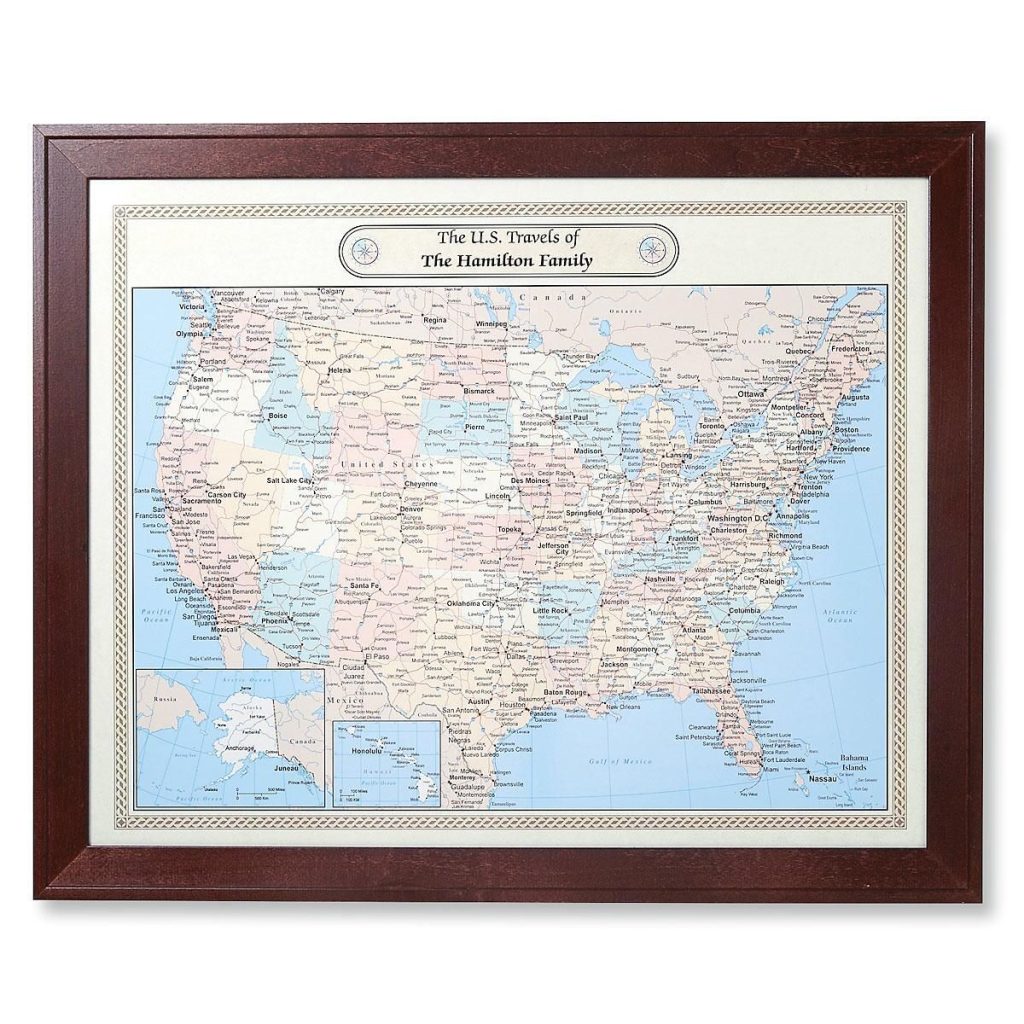
Real-Life Application: The Craft of Exploration
2. Travel Journals: Chronicles of Wanderlust and Reflection
Real-Life Application: Sketches and Stories Across Continents
3. Tailored Recommendations: Curating Authentic Experiences
Real-Life Application: Culinary Expeditions
4. Eco-Friendly Exploration: Sustainable Printing Practices
Real-Life Application: Green Trails and Eco-Friendly Journals
5. Personalized Souvenirs: Crafting Timeless Memories
Crafting Timeless Keepsakes
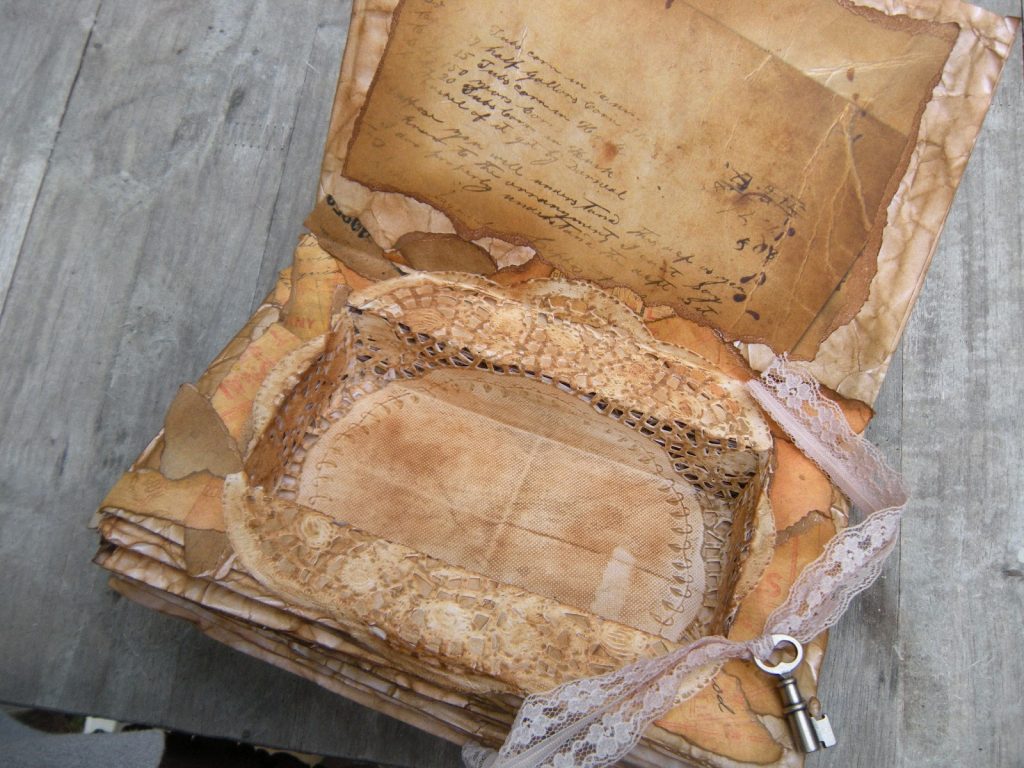
Crafting Unforgettable Journeys with Personalized Prints
The Craft of Letterpress Printing: A Vintage Art Form
I. Origins and Evolution: From Woodblocks to Movable Type
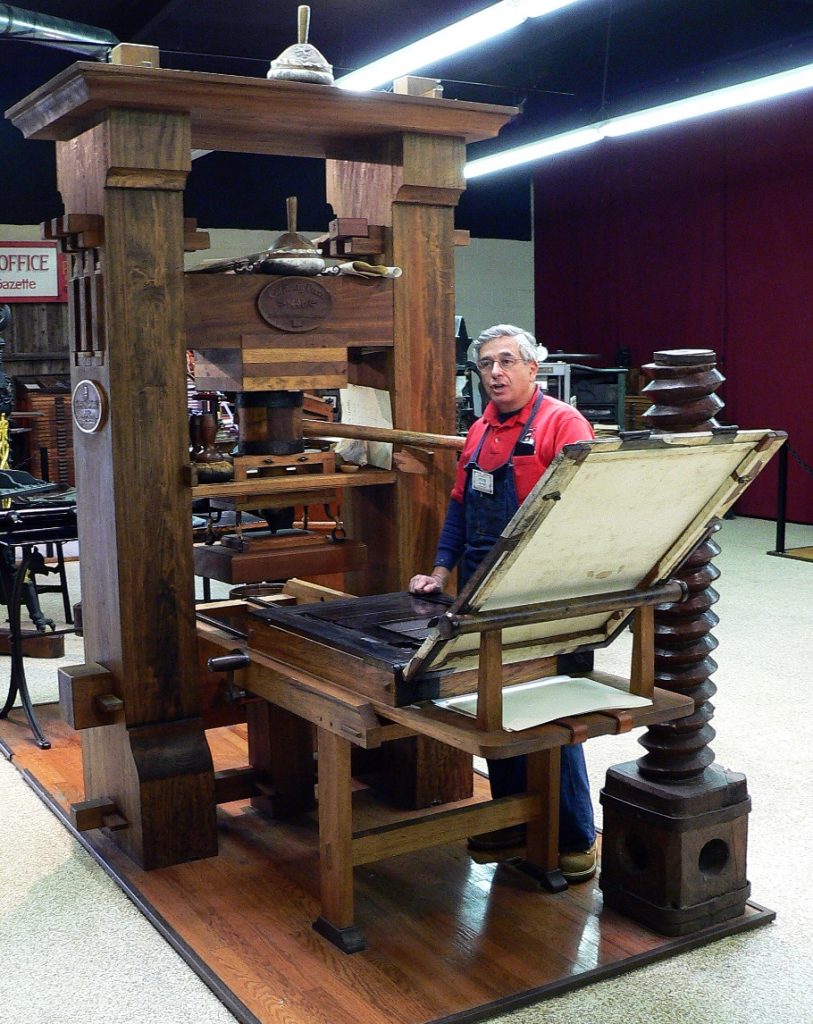
II. The Letterpress Process Unveiled: A Symphony of Techniques
A. Typesetting: The Art of Precision
B. Printing: Where Ink Meets Paper
C. The Human Touch: A Dance of Craftsmanship
III. The Impact of Letterpress: Shaping Culture and Commerce
A. Cultural Influence: From Books to Broadsides
B. Commercial Applications: Invitations, Packaging, and Beyond
IV. The Resurgence of Letterpress: A Renaissance in the Digital Era
A. Artistic Renaissance: Exploring Creative Boundaries
B. Craftsmanship in the Digital Age: Bridging Tradition and Technology
V. Preserving the Craft: Education, Preservation, and Legacy
A. Preservation Efforts: Museums, Archives, and Restoration
B. Legacy and Continuity: Passing the Torch
VI. The Future of Letterpress: Innovation and Preservation
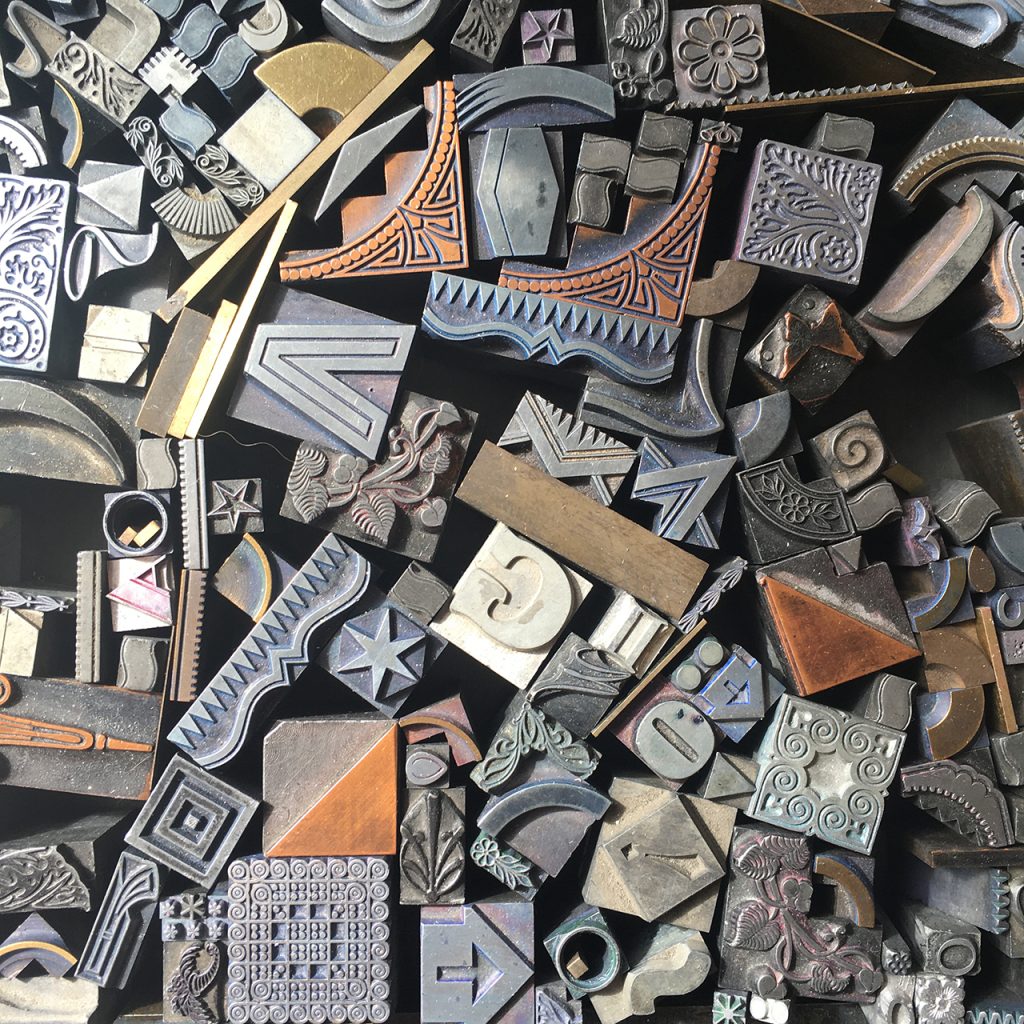
A. Hybrid Approaches: Integrating Letterpress with Modern Techniques
B. Environmental Considerations: Sustainable Practices
The Enduring Legacy of Letterpress Printing
The Psychology of Color in Print Marketing: Creating Lasting Impressions
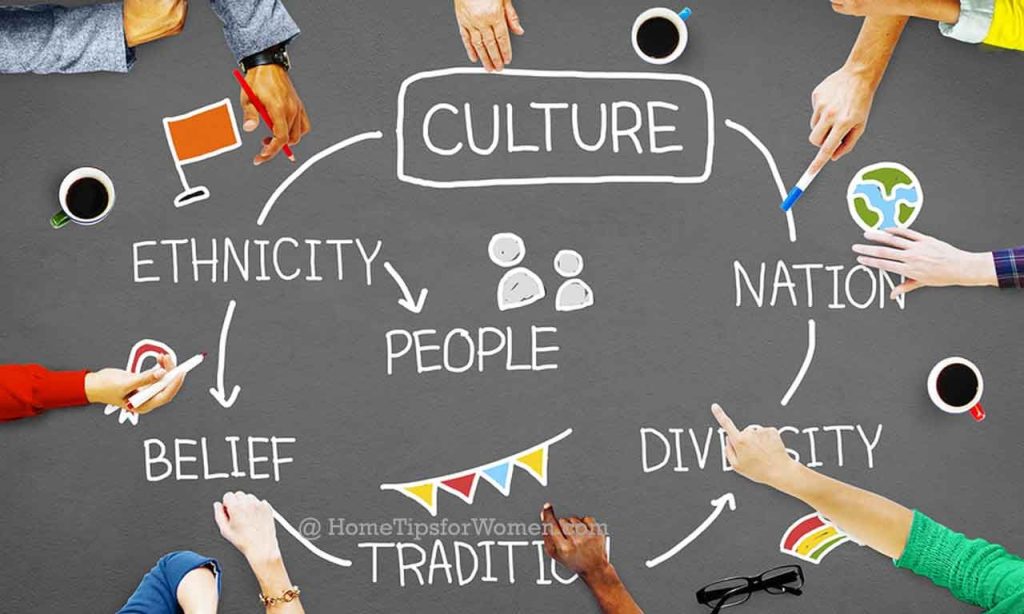
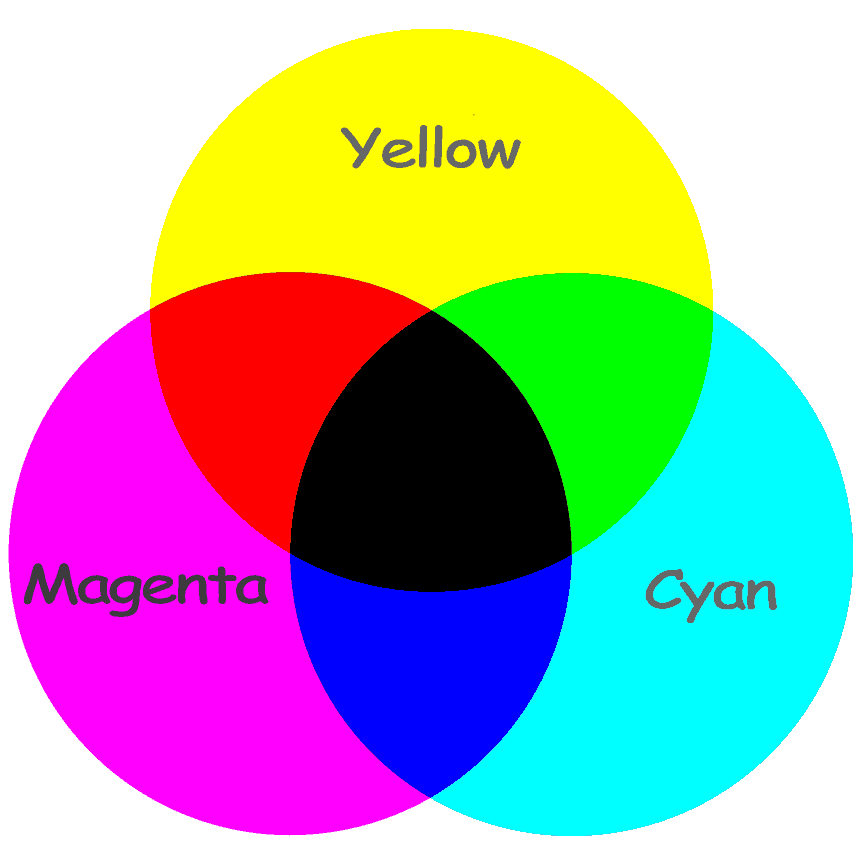
Mastering the Art of Creating Business Cards That Leave a Lasting Impression
The Enduring Value of Business Cards
1. A Memorable First Impression:
2. Human Connection:
3. Professionalism Personified:
4. Convenience in Hand:
Crafting Business Cards That Speak Volumes
1. Clarity and Conciseness:
2. Meticulous Material Selection:
3. Creative Branding:
4. Unique Shapes and Sizes:
5. Engaging Imagery:
6. The Elegance of Minimalism:
7. QR Codes and Digital Integration:
8. Texture Matters:
9. Double-Sided Brilliance:
10. Proofread Diligently:
The Canvas of Printing Possibilities
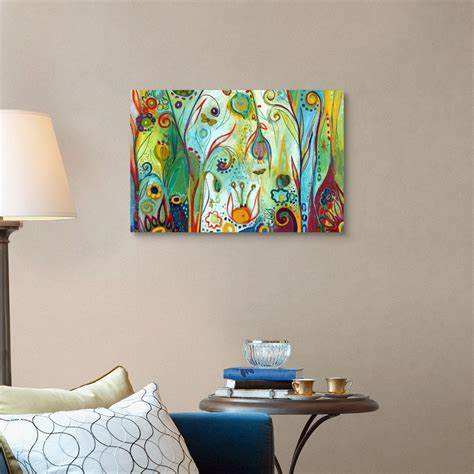
1. Offset Printing:
2. Digital Printing:
3. Letterpress Printing:
4. Silk Laminated Cards:
5. Foil Stamping:
6. UV Coating:
7. Recycled and Eco-Friendly Options:
The Art of Networking with Business Cards
1. Always Be Prepared:
2. Strategic Card Exchange:
3. Respect Recipients’ Cards:
4. Include Personal Notes:
5. Timely Follow-Up:
6. Maintain Professionalism:
Going Above and Beyond: Advanced Business Card Strategies
1. Interactive Elements:
2. Die-Cutting and Specialty Shapes:
3. Texture and Materials:
4. Minimalistic Elegance:
5. Dual-Purpose Cards:
6. Personalized Cards:
7. Branded Packaging:
8. Augmented Reality (AR):
9. Sustainability and Eco-Friendliness:
10. Social Media Integration:
11. Testimonials or Reviews:
12. Multilingual Cards:
13. NFC Technology:
14. Personal Branding:
15. A/B Testing:
A Masterpiece in Your Pocket

The Ultimate Guide to Print Services: Enhancing Business Communication in 2023
Introduction
Decoding Print Services
What are Print Services?
Diving Deeper into Traditional Print Services
The Emergence of Digital Print Services
3D Printing: A Novel Dimension
The Significant Role of Print Services in Business
Print’s Power in Branding and Marketing
The Cost-Effectiveness of Print Services
Print Services and Internal Communication
Sustainability: Embracing the Green Side of Print Services
Sustainable Practices in Print
Advantages of Sustainable Printing
Navigating the Selection Process: Choosing the Right Print Services
Clearly Define Your Needs
Evaluate Print Service Providers
Request Samples
Future Trends in Print Services: Looking Ahead
The Rising Demand for Personalization and Customization
Smart Packaging: A New Frontier in Print
Merging Physical and Digital Realities
Print-on-Demand Services
The Art of Brochure Printing: A Comprehensive Guide for Printing Experts
Designing Your Brochure
Choosing the Right Format
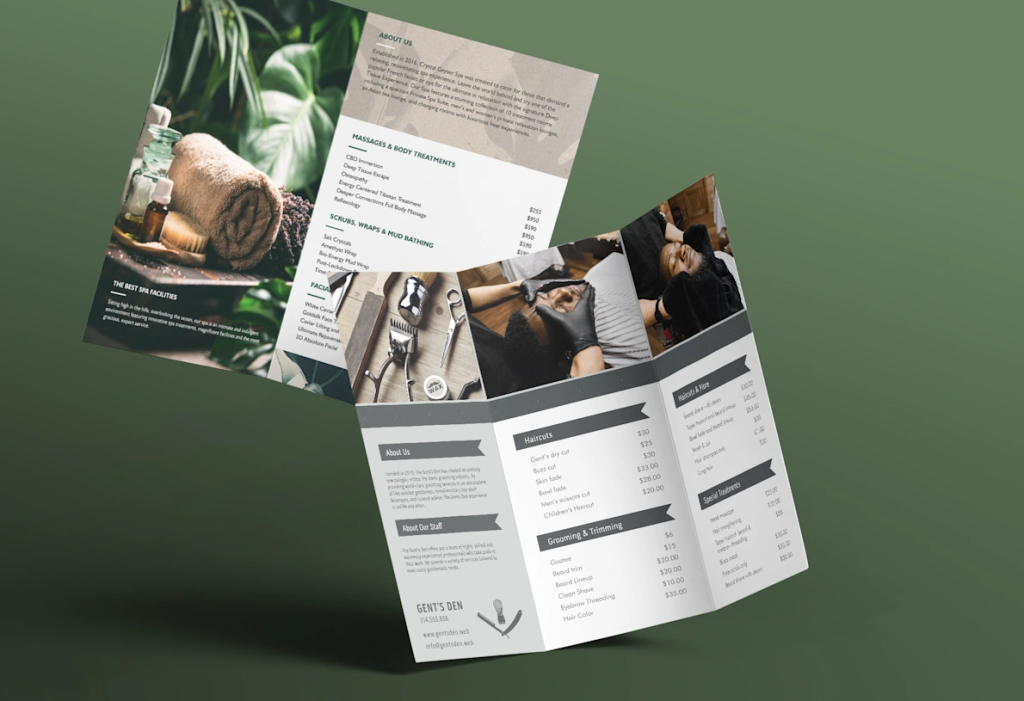
Print Quality
Finishing Options

Enhance Your Smile with Cosmetic Dentistry in Scottsdale, AZ

Teeth Whitening
Veneers

Dental Implants
Invisalign

Gum Contouring
Conclusion
A Comprehensive Guide to Inks and Coatings for Printing Applications
Types of Inks
When it comes to printing inks, there are several types that can be used depending on the type of material being printed on. For example, solvent-based inks use volatile organic compounds (VOCs) as a carrier for the pigment and offer excellent color saturation but also have a strong smell and release toxic fumes into the air when dried. But if you’re looking for an eco-friendly option, water-based inks are non-toxic and offer good color saturation without any toxic fumes or smells. They also dry faster than solvent-based inks, making them ideal for high-volume projects.Types of Coatings
In addition to selecting the right type of ink for your project, it’s also important to consider which type of coating is best suited for your needs. Glosses or mattes finishes can be applied as coatings that provide added protection against fading due to sunlight exposure over time when printed on outdoor surfaces like billboards or signs. Varnish is another popular coating choice that provides a glossy look while protecting against dirt, fingerprints, and UV rays from fading colors over time. Finally, UV curing ink sets offer better resistance against fading due to sunlight exposure over time when printed on outdoor surfaces like plastic containers or metal cans while providing a glossy finish that resists scratches and other damages more effectively than varnish or glosses coatings do.
No matter what type of material you’re printing on—from paper goods to plastics—it’s essential that you select an appropriate combination of ink and coating for your project in order to ensure optimal results. With this comprehensive guide to selecting specialized printing inks with particular properties suitable for specific applications combined with protective coatings like varnish or UV curing ink sets that offer better resistance against fading due to sunlight exposure over time when printed on outdoor surfaces, you’ll be well equipped with the necessary information needed to make an informed decision about which ink/coating combination is best suited for your needs! Good luck!
